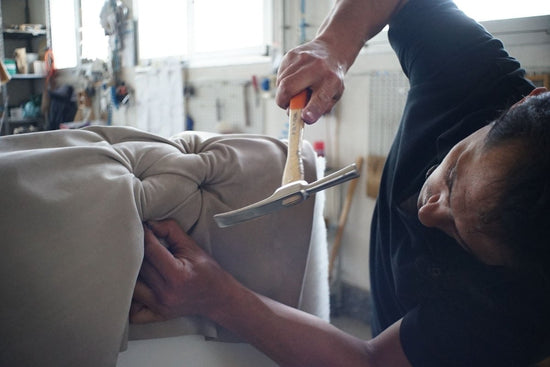
Carbon Insetting: What It Is And Why It's The Future
You might’ve heard of carbon offsetting, but have you heard of carbon insetting?
Carbon offsetting lets companies fund external projects to make up for their own emissions. But this band-aid approach is losing appeal as scrutiny grows.
Now, many businesses are shifting to "carbon insetting" for more meaningful impact.
In this post, we’ll review the benefits of key differences between insetting vs offsetting, the pillars of carbon insetting, as well as implementation.
We’ll also dive into how consumers can vote with their wallet, and what the future of carbon insetting really looks like.

What Is Carbon Insetting?
Carbon insetting integrates green initiatives directly into company operations, like adding renewable energy or sustainable agriculture.
While offsetting tries to compensate for damage done, insetting prevents it in the first place through fundamental operational shifts. It embeds sustainability into the business's core rather than just paying extra for a green stamp of approval.
This concept isn't entirely new, but has gained traction as carbon markets and net-zero claims face skepticism.
Essentially, insetting is about taking ownership of emissions within your own four walls, not just paying others to reduce them. It builds decarbonization into the production process through concrete internal changes.
But companies are realizing they need to walk the walk if they want to talk the talk on carbon neutrality. Insetting offers a path to genuine emissions reduction within their business footprint.
The Key Differences Between Carbon Offsetting and Carbon Insetting
|
Aspect |
Carbon Offsetting |
Carbon Insetting |
|
Definition |
A practice where companies invest in external projects to compensate for their own greenhouse gas emissions. |
A strategy where companies reduce or remove greenhouse gas emissions within their own operations and supply chains. |
|
Focus |
External: Projects are typically outside the company's operations and may be in different geographical locations. |
Internal: Initiatives are within the company's own value chain, focusing on direct operations and supplier relationships. |
|
Nature of Projects |
Often includes renewable energy projects, reforestation, and methane capture at landfills. |
Primarily involves nature-based solutions like reforestation, agroforestry, renewable energy, and regenerative agriculture within the company's operational sphere. |
|
Impact Measurement |
Emissions reductions are usually quantified and sold as carbon credits. |
Emissions reductions are integrated into the company's sustainability reporting, often not translated into carbon credits. |
|
Long-term Strategy |
May be seen as a short-term solution to meet sustainability goals. |
Seen as a long-term strategy to intertwine a company’s economic viability with its environmental responsibility. |
|
Brand Perception |
May face skepticism as it might be seen as outsourcing responsibility. |
Often seen as a more genuine commitment to sustainability as it tackles emissions at the source. |

The Pillars of Carbon Insetting
Companies are shifting gears from relying on outside carbon offsets to reducing emissions closer to home. This approach focuses on green initiatives within their own operations to cut carbon footprints while boosting sustainability reputation.
So what practical steps enable insetting?
Carbon Capture and Storage (CCS)
Carbon Capture and Storage (CCS) tech traps carbon dioxide from fossil fuel use and industrial processes before release into the air.
The CO2 can then be stored underground or reused. Installing CCS systems can massively decrease emissions, demonstrating serious commitment to net zero goals.
Companies can implement CCS by installing carbon capture technology at emission sources like power plants and factories to trap CO2, then securely storing the captured gas underground.
Sustainable Supply Chain Management
Looking past just factory smokestacks, sustainable supply chain management takes a big-picture view of environmental impacts across the full supply chain.
By working with suppliers, optimizing resources, cutting waste, and promoting sustainability, companies can significantly reduce supply chain emissions. A demonstrably green supply chain also appeals to eco-conscious buyers.
Agroforestry
Planting trees and shrubs within farmland, called agroforestry, is another impactful carbon saver. It pulls in CO2 while also boosting biodiversity and soil health - a win-win. Conservation efforts like reforestation within a company's reach also offset emissions close to home.
Companies can support agroforestry projects by working with local farmers to plant trees and shrubs within their agricultural lands, which sequesters carbon while providing other ecological benefits.
Now that we understand the pillars of carbon insetting, let’s go a bit deeper into how companies can make this happen for their business.

Implementing Carbon Insetting in Business
Charting a carbon insetting course starts with a solid roadmap. Here are key steps for companies to develop an insetting strategy:
Step 1: Get the Baseline - Understand current carbon emissions and environmental impacts across your operations and suppliers.
Step 2: Engage Partners - Bring employees, suppliers, and customers on board to provide input and build support.
Step 3: Set Realistic Goals - Establish achievable insetting targets aligned with broader sustainability aims. Don't overreach.
Identify Opportunities - Explore the best insetting options for your business, like supply chain changes or carbon capture.
Make an Action Plan - Create a detailed plan with timelines, responsibilities, and tracking methods.
Implement the Strategy - Roll out initiatives company-wide, ensuring strong communication and training.
Monitor and Refine - Continuously track progress, assess results, and improve the strategy as needed.
Overcome Hurdles - Challenges like upfront investment can arise but can be tackled through collaboration, incentives, and instilling an eco-culture.
Learn from Leaders - Companies forging the insetting path offer invaluable lessons on marrying sustainability with pragmatic strategy.

Why Consumers Should Care About Carbon Insetting - Not Just Businesses
Climate change is a real threat, and business practices play a big role in impacts. But it's not just up to corporations - consumers also shape outcomes through purchases.
Here's why carbon insetting should matter to us all:
Vote With Your Wallet
What you buy is a vote for the kind of world you want. Supporting insetting-focused companies promotes sustainability in business, so make sure to use your dollars to drive change.
Quality and Ethics Over Quantity
Insetting reflects a broader commitment to green operations. This often translates into higher-quality, ethical products and labor practices.
Spark a Ripple Effect
Consumer choices ripple outwards. Favoring eco-conscious brands signals other companies to follow suit. Collectively, we can spur a wave of insetting adoption.
Educate and Advocate
Knowing about insetting allows you to make informed choices and advocate for sustainability.
Make It Better For Future Generations
Supporting insetting contributes to a culture of environmental stewardship. It's about ensuring the next generation inherits a thriving, resilient world.
Insetting is a shared endeavor. Our dollars today shape tomorrow's landscape. By driving insetting's growth, we can align commerce and conservation for a greener future.

Future of Carbon Insetting: Predicting The Next Decade
Carbon insetting is likely to catch on big time over the next 10 years as more companies wake up to the climate crisis. What seems innovative now will probably become standard as sustainable business gets normalized.
New tech should also make it cheaper for companies to cut emissions within their own operations and supply chains. That will speed adoption.
Widespread insetting could put a real dent in global emissions by tackling them directly at the source. It also gets companies working together across borders, coordinating sustainability in their supply chains. This kind of teamwork is how we start moving the needle.
Down the line, AI and financial innovation could boost insetting too - making the data and investments work better. Mixing tech and sustainability is how you get both efficient and impactful.
At AURA, insetting shows business is getting serious about holistic sustainability. But to achieve its potential, industries have to coordinate and commit.
If we collaborate and keep innovating, insetting's future looks bright. It's the kind of big-picture change we need in order to get emissions down and keep economies thriving.
There's work to do, but the path is clear.
FAQs
What are examples of carbon insetting?
(1.) Coffee companies planting trees amid the crops of growers they source from. This enables carbon capture while benefiting local farms. (2.) Hotels and restaurants planting on premises or growing their own herbs to cut transportation emissions. (3.) Fashion brand Burberry partnered to enhance carbon capture on their wool suppliers' farms in Australia, restoring habitat biodiversity. (4.) Nestlé pursued tree planting on suppliers' lands to sequester carbon while promoting sustainable agriculture among providers.
Can you sell carbon insets?
Right now, carbon insetting isn't a trading market like with carbon credits and offsets. The focus is on businesses walking the walk internally when it comes to emissions cuts. Down the road, we may see insetting evolve to have more structured markets and frameworks like offsetting. But for now, it's centered on companies rolling up their sleeves and putting in the work to green their own supply chains and production ecologically.





Leave a comment
This site is protected by hCaptcha and the hCaptcha Privacy Policy and Terms of Service apply.